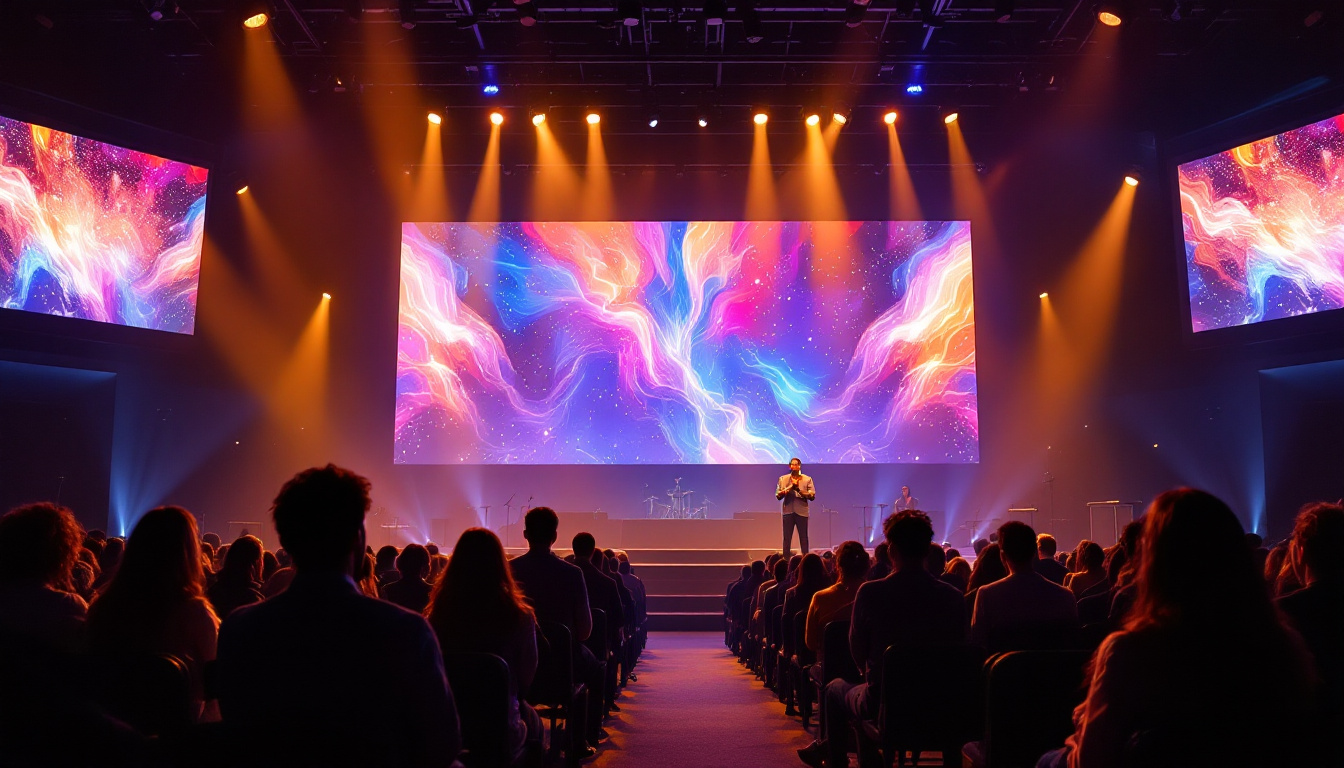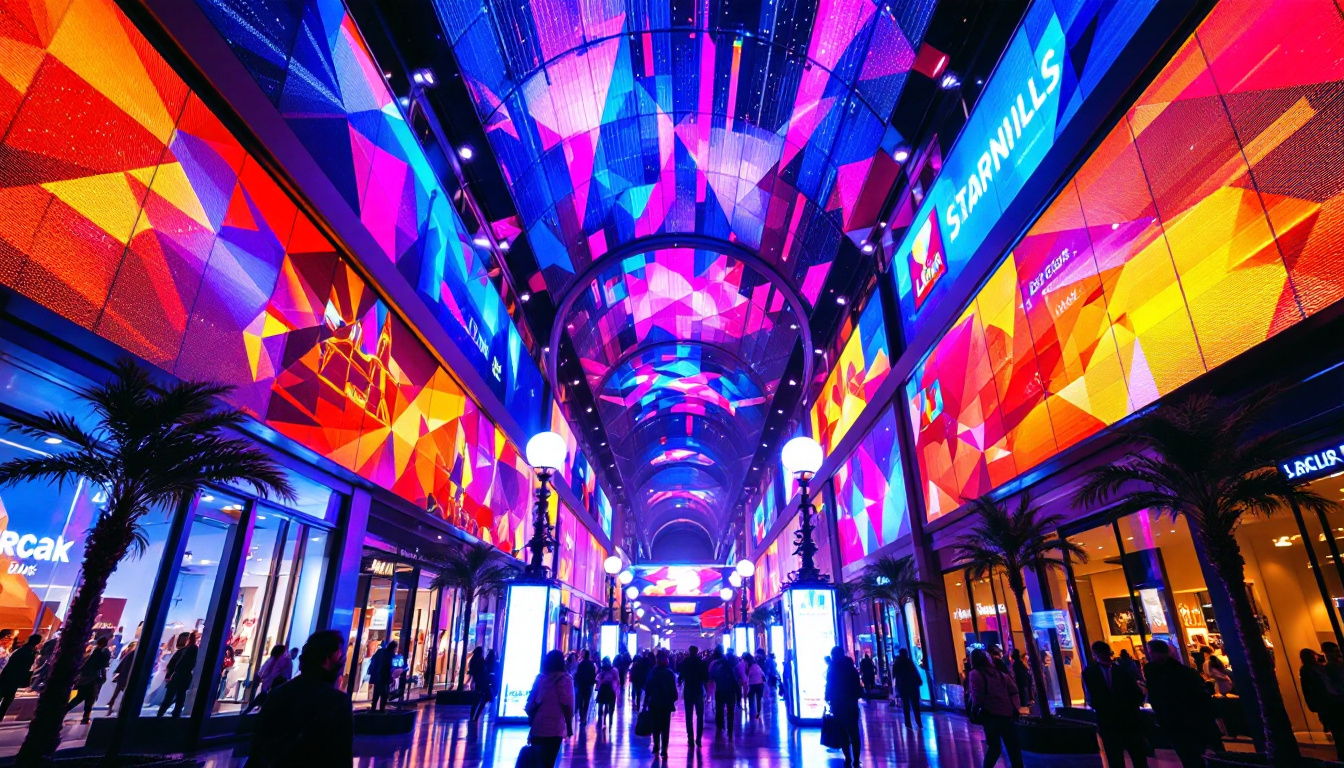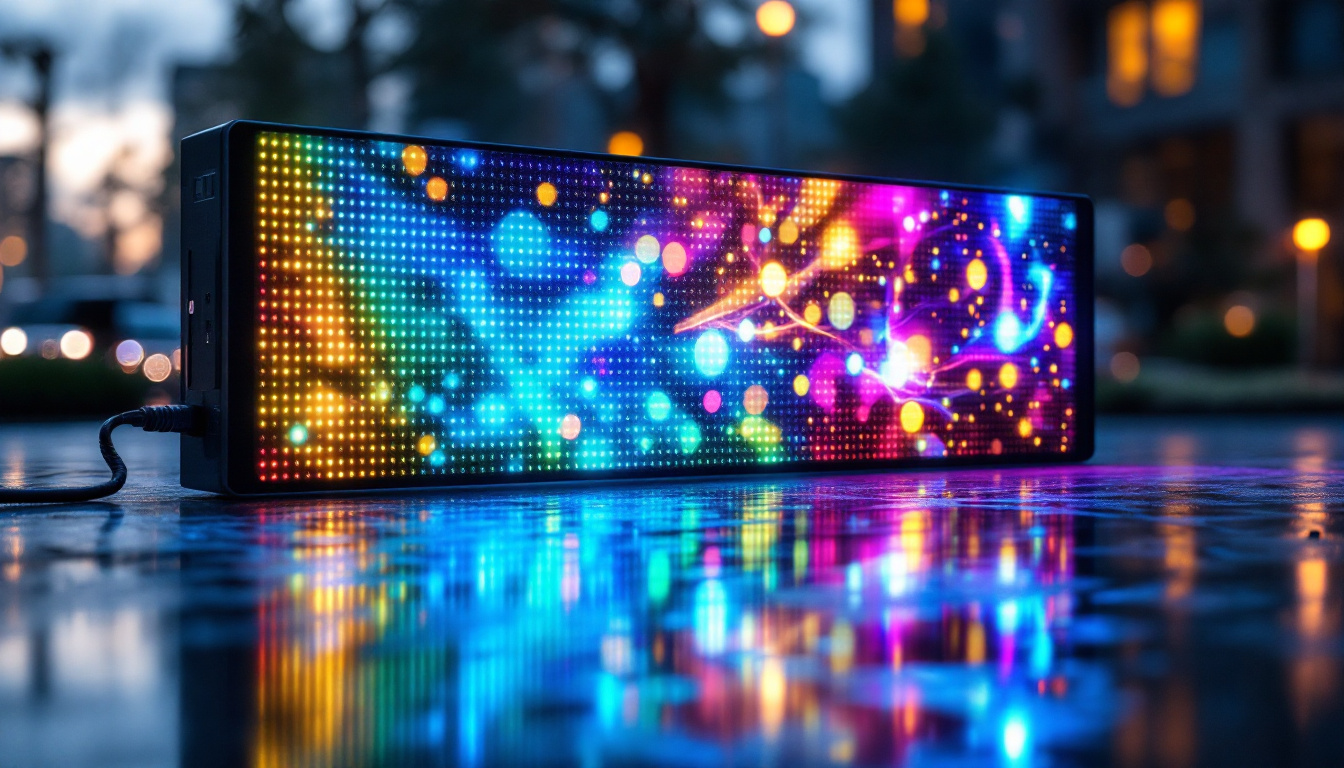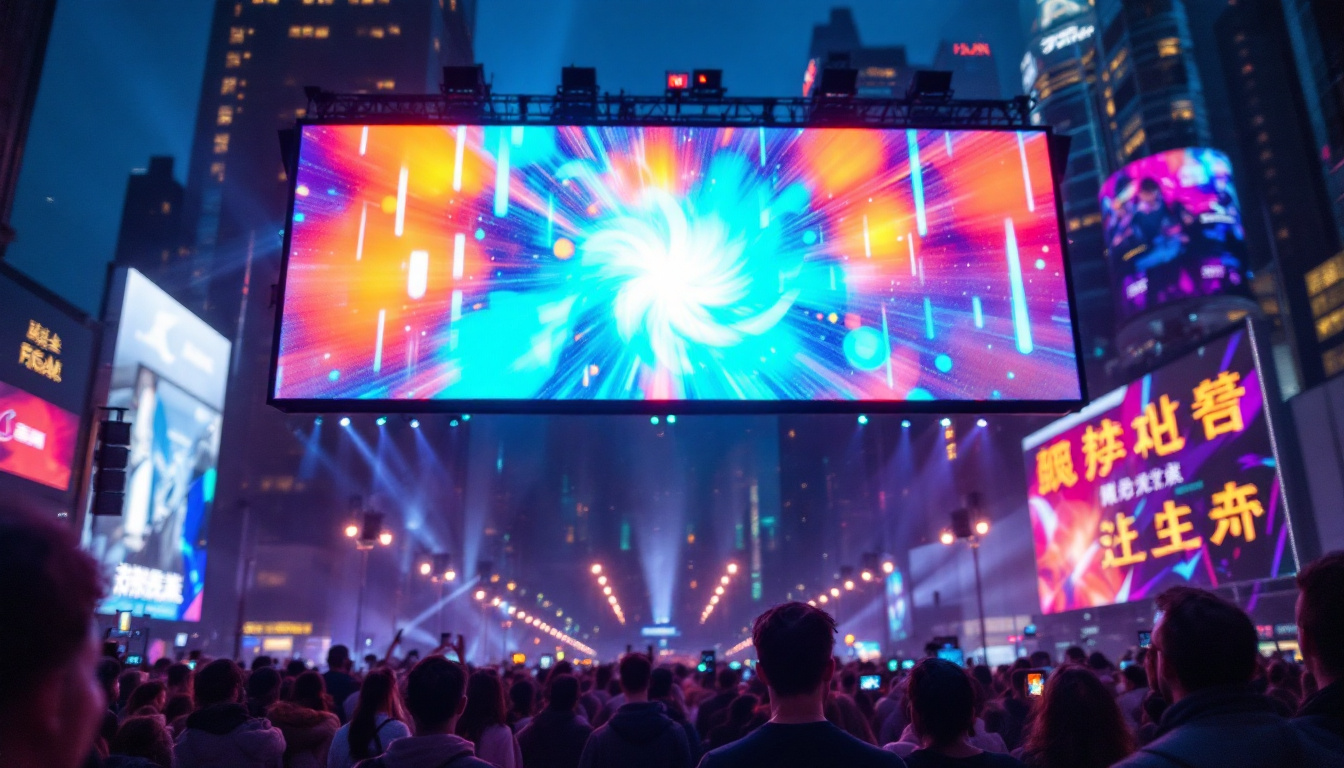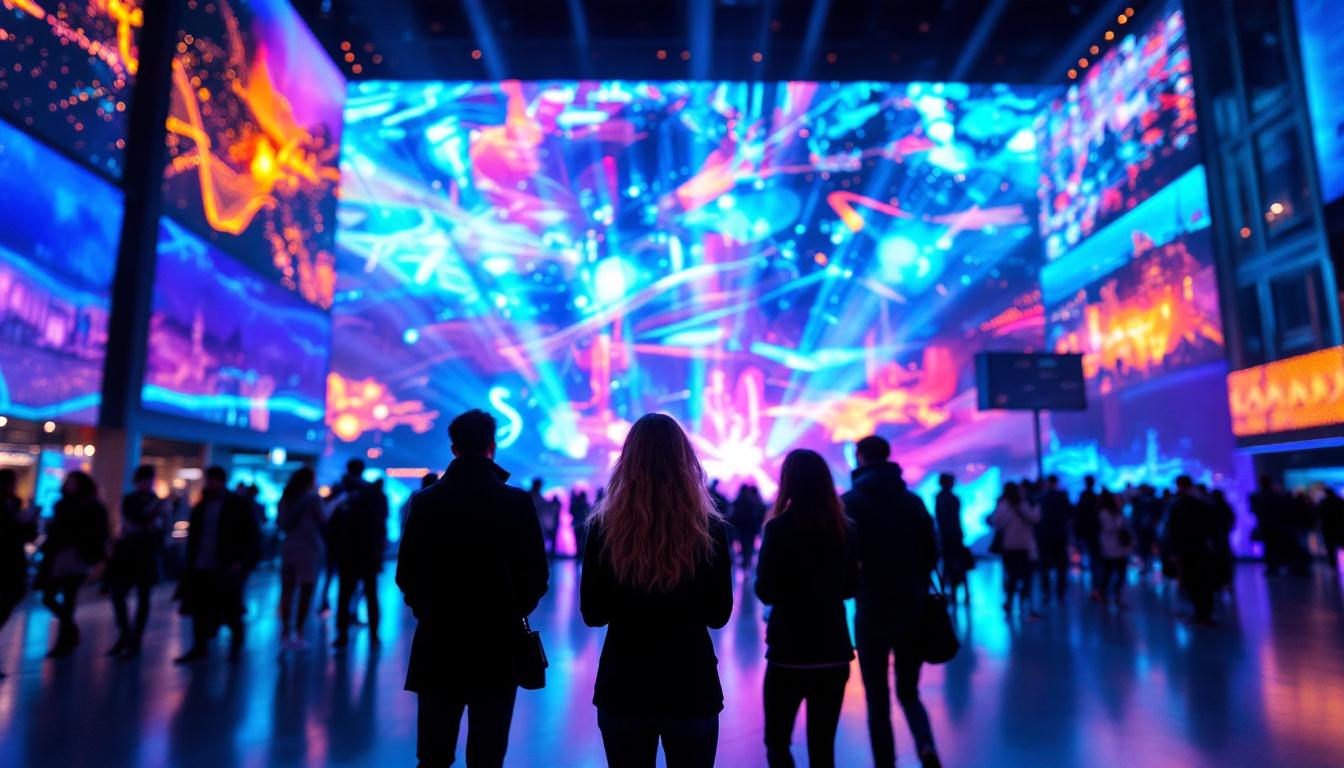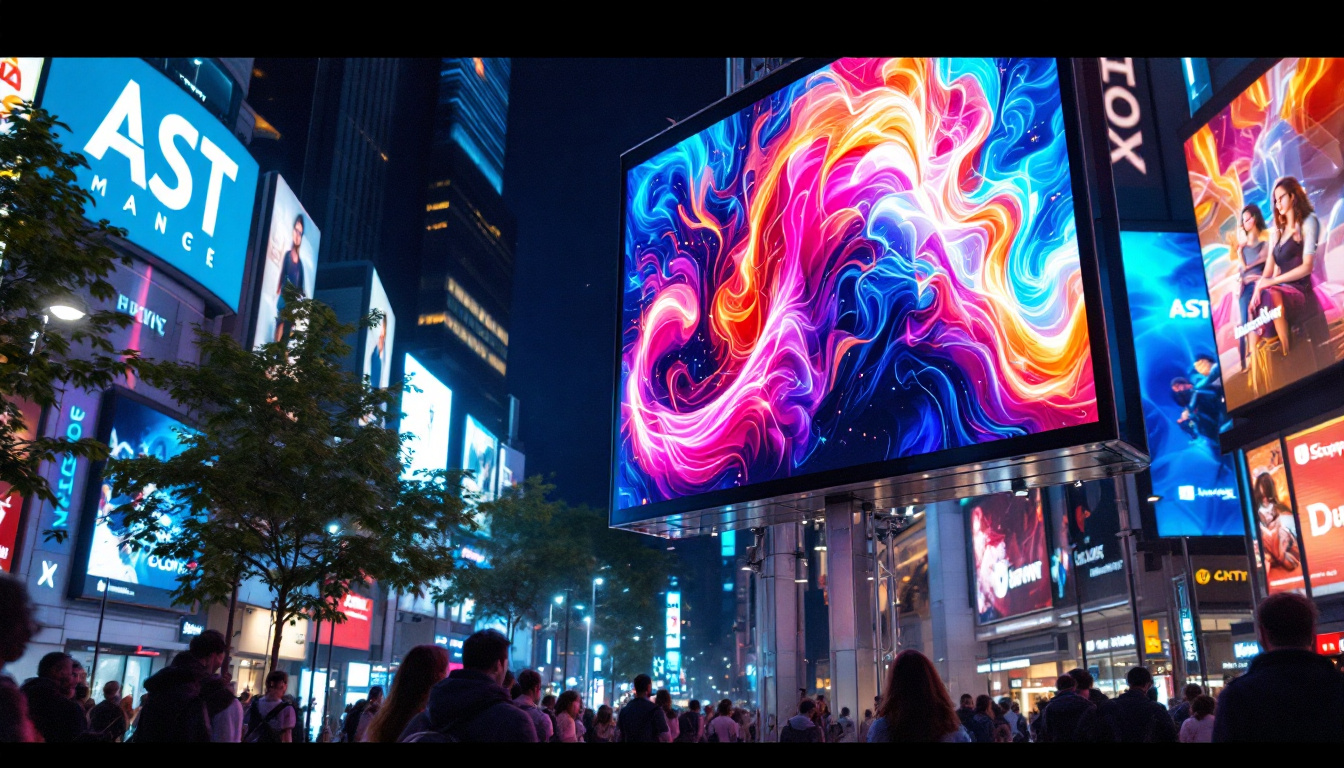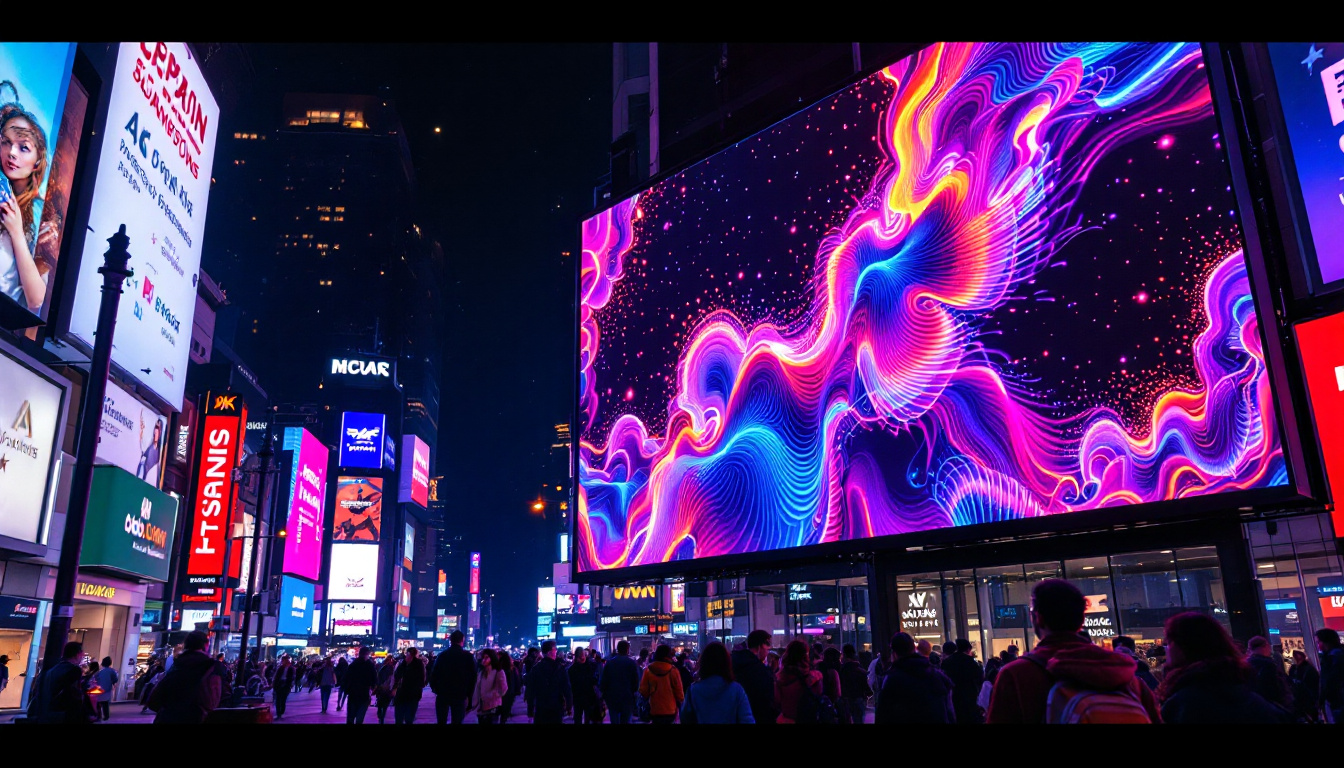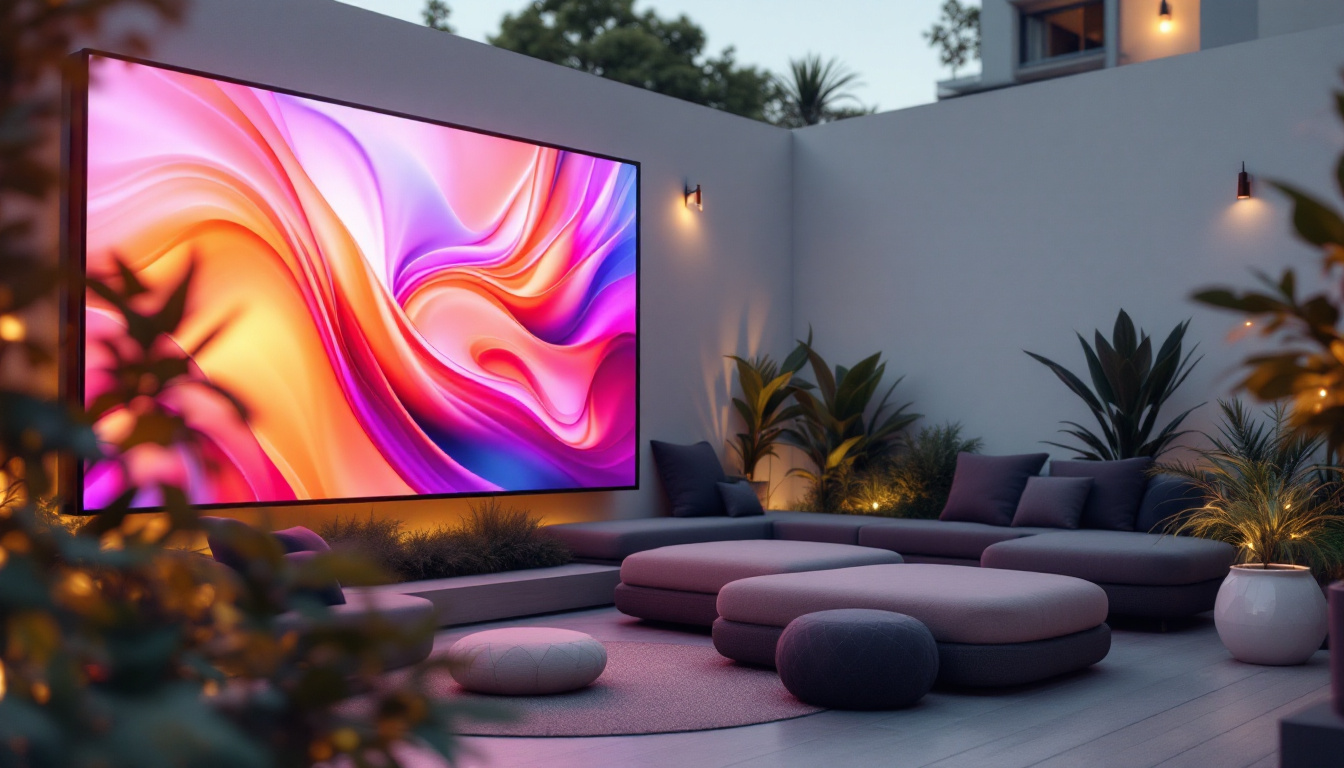In the modern age of worship, churches are increasingly adopting advanced technologies to enhance the experience of their congregations. One of the most significant innovations in this realm is the use of LED displays as church backdrops. These vibrant screens not only serve functional purposes but also add a dynamic visual element to worship services, events, and gatherings. This article delves into the various aspects of LED displays, exploring their benefits, types, and considerations for implementation in a church setting.
Understanding LED Displays
LED (Light Emitting Diode) displays have revolutionized the way visual content is presented. Unlike traditional projection systems, LED technology offers superior brightness, clarity, and color accuracy. This section will explore the fundamental aspects of LED displays, including their operation and advantages over other display technologies.
How LED Displays Work
LED displays consist of numerous tiny light-emitting diodes that work together to create images and videos. Each diode can emit different colors, and when combined, they form a full spectrum of colors, allowing for vibrant and dynamic visuals. The arrangement of these diodes can vary, leading to different types of LED displays, such as direct view and backlit screens.
In a church backdrop setting, LED displays can be configured in various sizes and shapes, making them versatile for different environments. They can be mounted on walls, suspended from ceilings, or even used as portable screens for outdoor events. The flexibility in installation options makes LED displays an appealing choice for churches looking to enhance their visual presentation. Furthermore, the modular nature of many LED systems allows for easy upgrades and customization, enabling churches to adapt their displays as their needs evolve over time.
Advantages of LED Displays
LED displays offer several advantages that make them ideal for church backdrops. One of the most notable benefits is their brightness. Unlike traditional projectors, which can struggle in well-lit environments, LED displays maintain clarity and vibrancy even in bright church settings. This ensures that all attendees can see the content clearly, enhancing engagement during services.
Another significant advantage is the longevity of LED technology. LED displays have a longer lifespan compared to traditional projection systems, reducing the need for frequent replacements. Additionally, they consume less power, making them a more energy-efficient option for churches concerned about operational costs. The reduced heat output of LED displays also contributes to a more comfortable environment, as there is less strain on air conditioning systems, especially during long services or events.
Moreover, LED displays support a wide range of content formats, from live video feeds to pre-recorded presentations, allowing for a dynamic worship experience. This adaptability means that churches can easily incorporate multimedia elements such as music videos, sermon notes, and even social media feeds into their services. The ability to seamlessly transition between different types of content not only keeps the congregation engaged but also fosters a more interactive and immersive atmosphere during worship.
Types of LED Displays for Churches
When considering LED displays for a church backdrop, it’s essential to understand the different types available. Each type has its unique features and applications, making it crucial to choose the right one based on specific needs and settings. Here are some of the most common types of LED displays suitable for churches.
Indoor LED Displays
Indoor LED displays are designed for use within the church environment. They typically have a higher pixel density, which allows for sharper images and text. These displays are perfect for worship services, announcements, and multimedia presentations. They can be mounted on walls or used as part of a stage setup, providing an engaging backdrop for performances and sermons.
One of the key features of indoor LED displays is their ability to display high-resolution content. This is particularly beneficial for churches that wish to showcase detailed visuals, such as scripture verses, worship lyrics, or video clips. The clarity of indoor LED displays enhances the overall worship experience, making it more immersive for the congregation.
Outdoor LED Displays
For churches that host outdoor events or have outdoor services, outdoor LED displays are an excellent choice. These displays are built to withstand various weather conditions and are typically brighter than indoor models, ensuring visibility even in direct sunlight. Outdoor LED displays can be used for community events, concerts, and special services, providing a powerful visual experience for attendees.
Moreover, outdoor LED displays often come with features such as enhanced weatherproofing and protective coatings, ensuring durability and longevity. This makes them a worthwhile investment for churches looking to extend their reach beyond the confines of their buildings.
Modular LED Displays
Modular LED displays offer a unique solution for churches that require flexibility in their visual presentations. These displays consist of individual panels that can be arranged in various configurations, allowing for custom sizes and shapes. This adaptability makes modular LED displays ideal for churches that frequently change their stage setups or event layouts.
With modular displays, churches can create stunning visual backdrops that fit their specific needs. Whether it’s a large screen for a special event or a smaller setup for a regular service, modular LED displays provide the versatility needed to accommodate different scenarios. Additionally, they can be easily transported and reconfigured, making them a practical option for multi-site churches.
Considerations for Implementing LED Displays
While LED displays offer numerous benefits, there are several considerations to keep in mind when implementing them in a church setting. Understanding these factors can help ensure a successful installation and optimal use of the technology.
Budget and Cost
The cost of LED displays can vary significantly based on size, type, and features. Churches should establish a clear budget before exploring options. It’s essential to consider not only the initial purchase price but also ongoing maintenance and operational costs. Some displays may require specialized installation or additional equipment, such as video processors or media servers, which can further impact the budget.
Investing in quality LED displays can lead to long-term savings, as they typically require less maintenance and have a longer lifespan compared to other technologies. Churches should weigh the initial investment against the potential benefits and savings over time.
Technical Expertise
Implementing LED displays may require technical expertise, especially when it comes to installation and operation. Churches may need to hire professionals for installation, programming, and maintenance. It’s essential to ensure that staff members are trained in using the technology effectively, as this will maximize the benefits of the LED displays.
Consideration should also be given to the ongoing support and training needed for volunteers or staff who will operate the displays during services and events. Providing adequate training can help avoid technical issues and ensure smooth operation during worship services.
Content Creation and Management
Having an LED display is only part of the equation; creating engaging content is equally important. Churches should develop a content strategy that aligns with their mission and enhances the worship experience. This may include scripture verses, sermon notes, worship lyrics, and multimedia presentations.
Content management systems (CMS) can be beneficial for organizing and scheduling content to be displayed. A well-planned content strategy ensures that the LED displays are used effectively, capturing the attention of congregants and enhancing their overall worship experience.
Enhancing Worship Experience with LED Displays
LED displays can significantly enhance the worship experience by providing dynamic visuals that complement the message being delivered. This section explores how churches can leverage LED technology to create a more engaging and immersive environment for their congregations.
Visual Storytelling
One of the most powerful aspects of LED displays is their ability to facilitate visual storytelling. Churches can use these displays to share impactful stories through videos, images, and graphics. This visual storytelling can resonate deeply with congregants, making sermons more relatable and memorable.
For instance, during a sermon on compassion, a church might display images of community service projects or testimonials from individuals impacted by the church’s outreach efforts. This not only reinforces the message but also encourages congregants to engage with the church’s mission actively.
Interactive Worship Elements
LED displays can also be used to introduce interactive elements into worship services. For example, churches can incorporate live polls, social media feeds, or prayer requests displayed on the screens. This interactivity fosters a sense of community and participation among congregants, making them feel more connected to the service.
Additionally, integrating multimedia elements such as music videos or live performances can further enhance the worship experience. By utilizing LED displays creatively, churches can create a vibrant and engaging atmosphere that resonates with attendees of all ages.
Special Events and Celebrations
During special events, such as holidays or church anniversaries, LED displays can play a crucial role in enhancing the overall experience. Churches can use these displays to showcase themed visuals, countdowns, or event schedules, creating excitement and anticipation among congregants.
For example, during Christmas services, LED displays can feature festive graphics, scripture readings, and even live feeds of performances. This not only adds to the celebratory atmosphere but also ensures that everyone in attendance can fully participate and engage with the event.
Conclusion
Incorporating LED displays into a church backdrop offers a multitude of benefits, from enhancing the visual experience to fostering engagement among congregants. As churches continue to embrace technology, LED displays stand out as a powerful tool for communication and connection. By understanding the different types of displays, considering essential factors for implementation, and leveraging the technology creatively, churches can significantly enrich their worship experience.
Ultimately, the goal of any church is to foster a sense of community and connection among its members. LED displays can play a pivotal role in achieving this, providing a dynamic platform for storytelling, interaction, and celebration. As technology continues to evolve, churches that embrace these innovations will be better equipped to meet the needs of their congregations and create memorable worship experiences.
Discover LumenMatrix LED Display Solutions
Ready to elevate your church’s worship experience with cutting-edge LED display technology? LumenMatrix specializes in a wide array of LED solutions, from Indoor and Outdoor LED Wall Displays to innovative options like Vehicle LED Displays and LED Transparent Displays. Embrace the future of visual communication and create an unforgettable atmosphere for your congregation. Check out LumenMatrix LED Display Solutions today and witness how our advanced technology can transform your church backdrop into a dynamic canvas for connection and storytelling.

